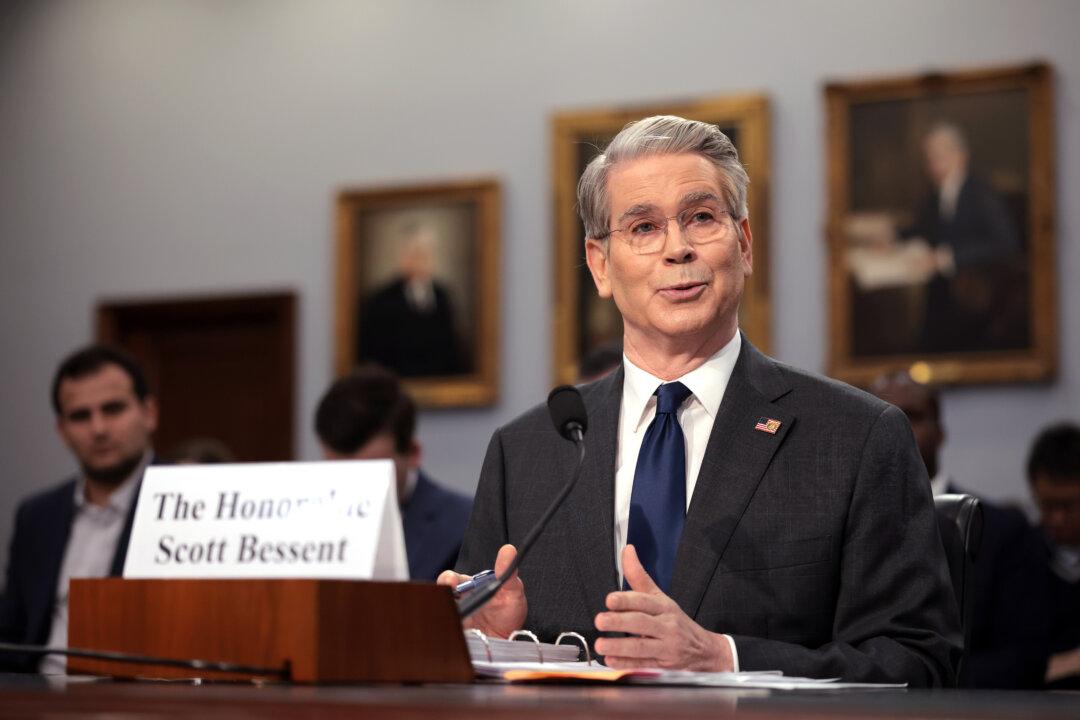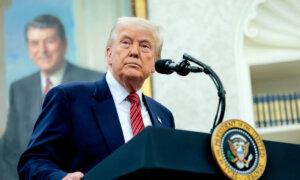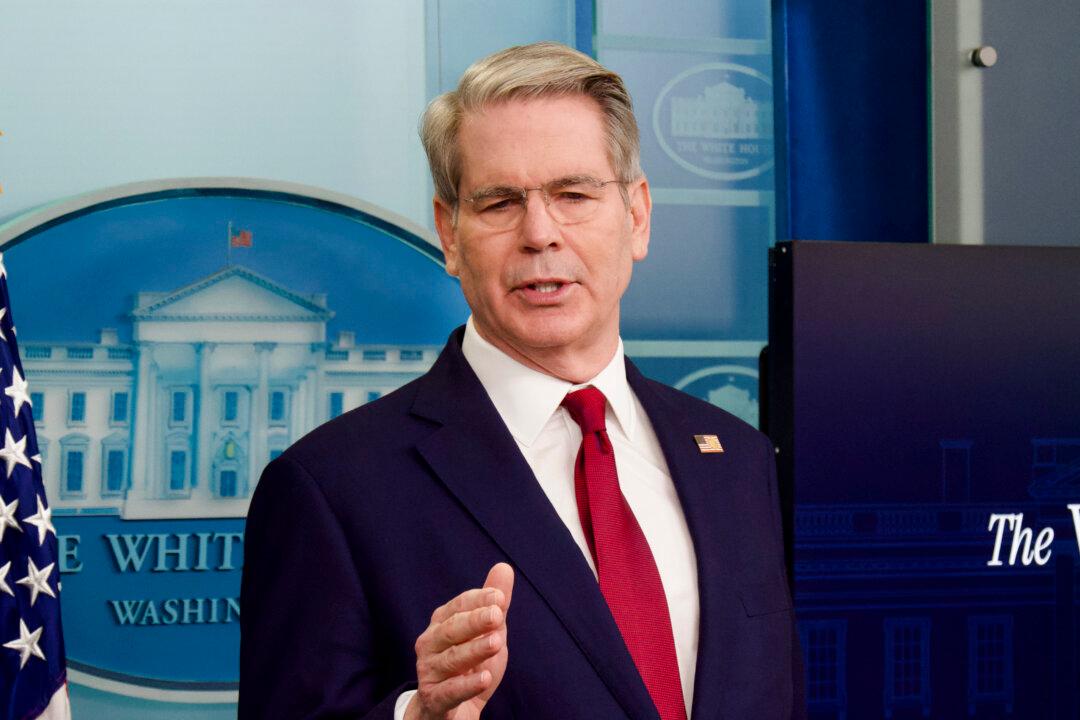Top negotiators from the United States and China are scheduled to meet on May 10 in Geneva, Switzerland, as the world’s two largest economies attempt to de-escalate the tariff situation.
Treasury Secretary Scott Bessent and Trade Representative Jamieson Greer are scheduled to meet with He Lifeng, China’s vice premier and lead economic representative, and Swiss President Karin Keller-Sutter.
The U.S. tariff rate on Chinese goods entering the country is 145 percent. Beijing has retaliated by imposing a 125 percent levy on American-made imports.
“I look forward to productive talks as we work towards rebalancing the international economic system towards better serving the interests of the United States.”
The Purpose
Although a comprehensive trade agreement is unlikely to emerge from the meeting, it could help break the ice and prevent further escalation of tensions between the two countries.“But we’ve got to de-escalate before we can move forward.”
“At President Trump’s direction, I am negotiating with countries to rebalance our trade relations to achieve reciprocity, open new markets, and protect America’s economic and national security,” Greer stated.
Reiterating the position of his predecessor, Janet Yellen, Bessent explained that the United States does not aim to decouple from China.
“What we want is fair trade,” he told the network.
Economists say that the American people should not expect a deal anytime soon.
According to Apollo chief economist Torsten Slok, the United States’ average negotiation time for a trade deal is about 18 months.
“Why does it take so long? Because trade negotiations involve going through what is imported into each country line by line and then negotiating the tariff for each product category,” Slok said in a note emailed to The Epoch Times.
Negotiators will then talk about a diverse array of issues, such as non-tariff barriers, anti-dumping practices, intellectual property rights, labor and environmental standards, and dispute resolution.
“The bottom line is that trade negotiations take time because they are complex,” Slok added.

Who Started What
So, who initiated the meeting anyway?“Recently, the US has said repeatedly it wants to negotiate with China,” wrote Lin.
Trump disagreed with the Chinese regime’s description of events.
“They said we initiated? Well, I think they ought to go back and study their files, OK?” the president told reporters at a White House event on May 7.
Earlier this week, appearing alongside Canadian Prime Minister Mark Carney, Trump told reporters that China wants to meet and negotiate and that the United States would do so at “the right time.”
For weeks, the president has stated that it is up to the Chinese regime to ensure discussions are underway.
80 Percent Tariff ‘Seems Right’
Ahead of the pivotal U.S.-China meeting, the president took to social media and stated that he might be willing to lower tariffs on China to 80 percent.It is unclear whether the president is pursuing a permanent 80 percent levy on Chinese goods or if he believes reducing the tariff rate would advance negotiations.
“Closed markets don’t work anymore!” the president said.
Trade Activity on Ice
Trump’s tariffs are beginning to take a toll on China’s economy. Factory activity has eased, foreign direct investment has tanked, and domestic consumption has slowed.In the first four months of 2025, Chinese shipments to the world’s largest economy tumbled 2.5 percent year-over-year, and imports of American-made goods fell nearly 5 percent.

The latest trade numbers are unsurprising as industry data suggests cratering activity.
For the week ending April 28, Chinese shipments to the United States tanked about 43 percent from the previous week and plunged 27 percent year over year.
Prior to the president’s global tariff announcement on April 2, companies rushed to front-run the tariffs and accelerate their purchases from abroad.
“These dramatic shifts, visible in booking data well before they appear at ports or in customs reports, highlight the importance of early indicators in a rapidly changing trade environment.”
Supply chain logistics platform Flexport reported on April 30 that the number of canceled scheduled sailings has increased significantly.
Due to diminished demand expectations, ocean carriers are reducing their capacity in the Transpacific Eastbound trade route “at faster rates than COVID.”
“For context, a service loop is like a bus route. It’s a set schedule that ships follow every week, stopping at the same ports in the same order.”
Looking ahead, the report projected that imports are expected to be down 20 percent year over year from June into the fall.
“Container carriers are indeed dropping voyages and consolidating cargo and service to ensure that their vessels are as full as possible and to maintain economies of scale as demand declines,” said Hackett Associates Founder Ben Hackett.
Talking to reporters at the Oval Office on May 8, Trump stated that declining cargo volume is a positive development because “that means we lose less money.”
Markets at a Standstill
In the final trading session before the U.S.-China trade talks begin, U.S. stocks were little changed.The leading benchmark averages were slightly down, while U.S. Treasury yields were flat.
The U.S. Dollar Index (DXY), a measure of the greenback against a weighted basket of currencies, kept its weekly gain intact.
“Trump is starting to talk a big game after negotiating one deal with our closest ally. Now the focus is on China. Britain just hammered out a deal with them that took three years,” said Jay Woods, the chief global strategist at Freedom Capital Markets, in a note to The Epoch Times.
“The market may be getting ahead of itself as we await any news as major headwinds approach.”
If there is positive negotiating momentum and the White House can secure a good deal with the Chinese regime, it could be a catalyst for the financial markets, says Ken Mahoney, the CEO of Mahoney Asset Management.
“If we get a better deal with China and a more clear/stable picture, the market rally can really continue to expand and surprise everyone, including ourselves,” Mahoney said in a note emailed to The Epoch Times.







